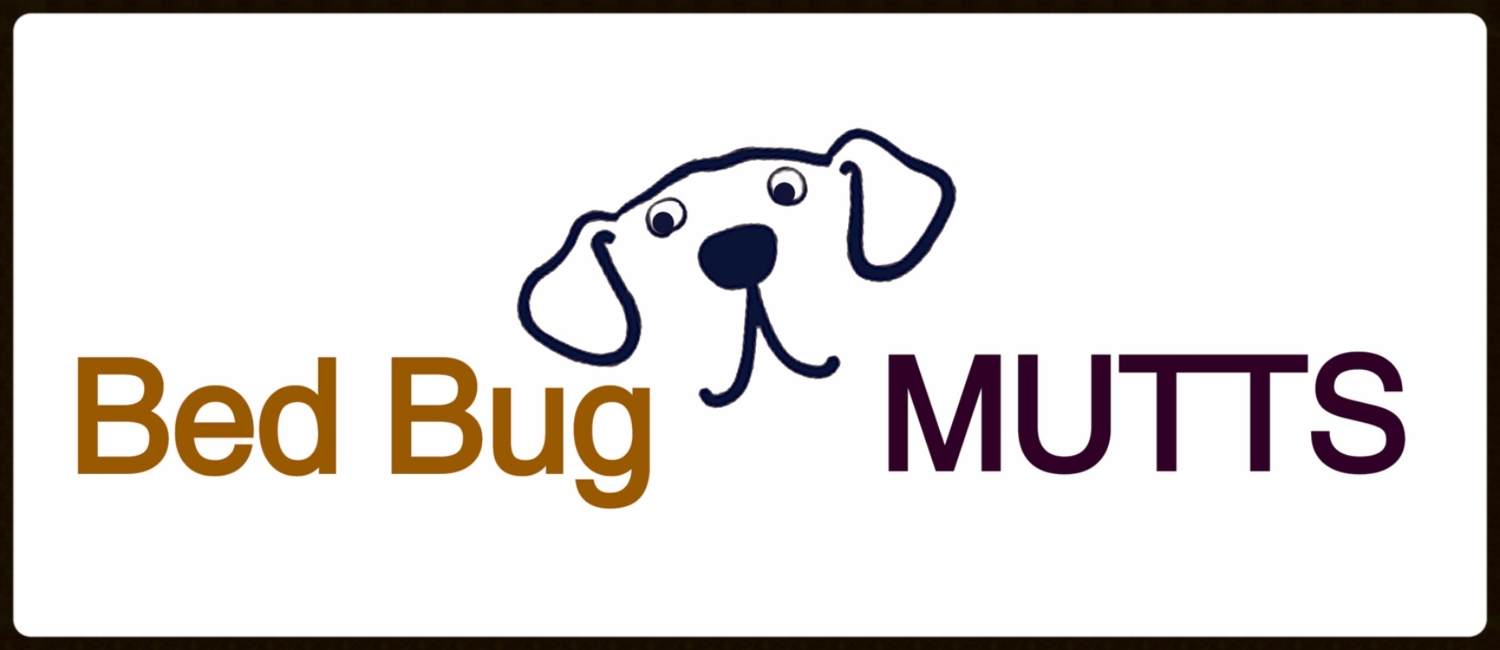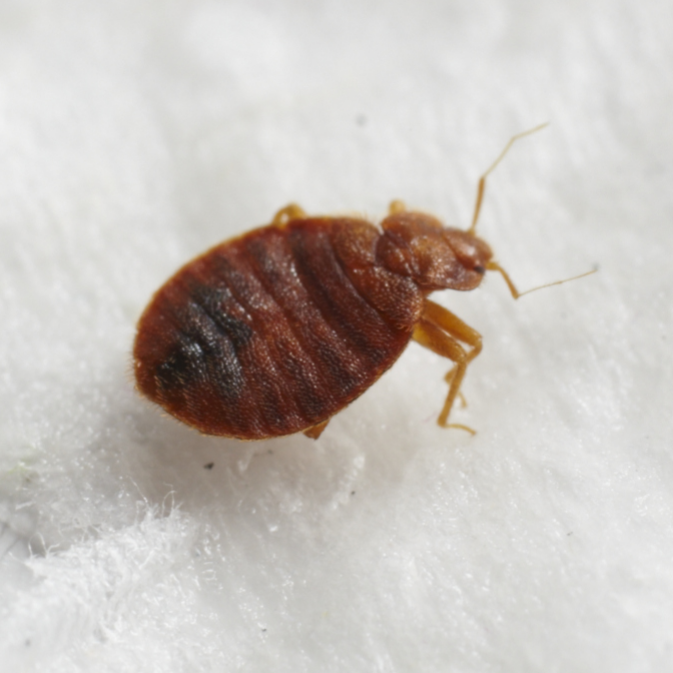
Female adult bed bug
With a little practice you can spot the difference between the male and female bed bugs; the female has a slightly rounded rear end.
Courtesy of anonymous www.Bedbugger.com forum poster

Male and Female Bed Bug
This photograph depicts a dorsal view of two bedbugs, Cimex lectularius. A male C. lectularius on the left, and a female on the right. Note the male’s slightly-pointed distal abdomen, where in females, it is rounded. Females are slightly larger than males in their lengthwise measurement.
The common bedbug C. lectularius is a wingless, red-brown, blood-sucking insect that grows up to 7 mm in length and has a lifespan from 4 months up to 1 year. Bedbugs hide in cracks and crevices in beds, wooden furniture, floors, and walls during the daytime and emerge at night to feed on their preferred host, humans.
Bedbug bites can result in clinical manifestations; the most common are small clusters of extremely pruritic, erythematous papules or wheals that represent repeated feedings by a single bedbug. Less common but more severe manifestations include grouped vesicles, giant urticaria, and hemorrhagic bullous eruptions. Bites should be managed symptomatically with topical emollients, topical corticosteroids, oral antihistamines, or some combination of these treatments.
Photo courtesy of CDC
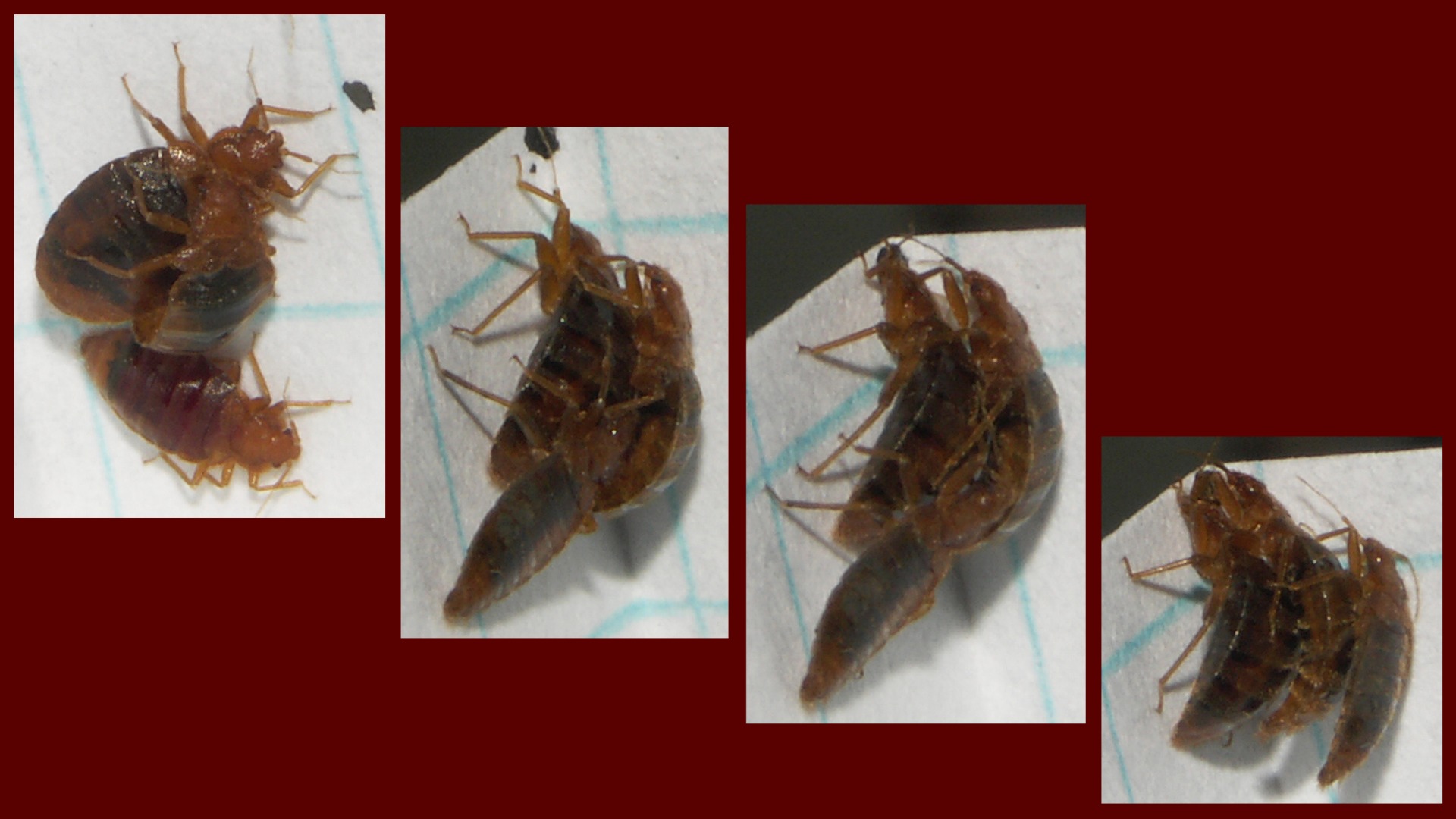
Traumatic Insemination
Start on the top left and view the sequence to the bottom right. Male & female mating with another male just hanging out below. The single male intrudes on the couple, pushing himself between them. Now no one is mating and soon after the threesome parted and all crawled away.
Photo courtesy of Lou Sorkin
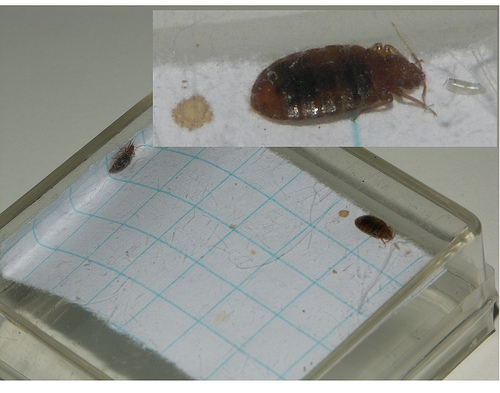
Mated Bed Bugs
Bugs fed and then mated soon after, then 48 hours passed before picture was taken. Male on left, female on right. Sometimes they are together, sometimes apart. Close-up of female shows newly deposited egg on right and waste dropping on left. Note that dropping is pale because it is nitrogenous waste, uric acid, and not digested blood. Even unfed first instar nymphs deposit pale droppings. There are times when the bug will void dark liquid or undigested blood very soon after feeding - possibly if it has taken in a large volume of blood and has to release some. 1/4 inch squares.
Notes and photo courtesy of Lou Sorkin

Adult bed bug with 2 eggs and grains of rice
In this bed bug photo, there is one adult bed bug and two bed bug eggs. The grains of white rice provide relative scale for comparison. An adult bed bug is 5 to 7 mm in length (less than 1/4 of an inch) and the eggs - well, as you can see - very tiny indeed.
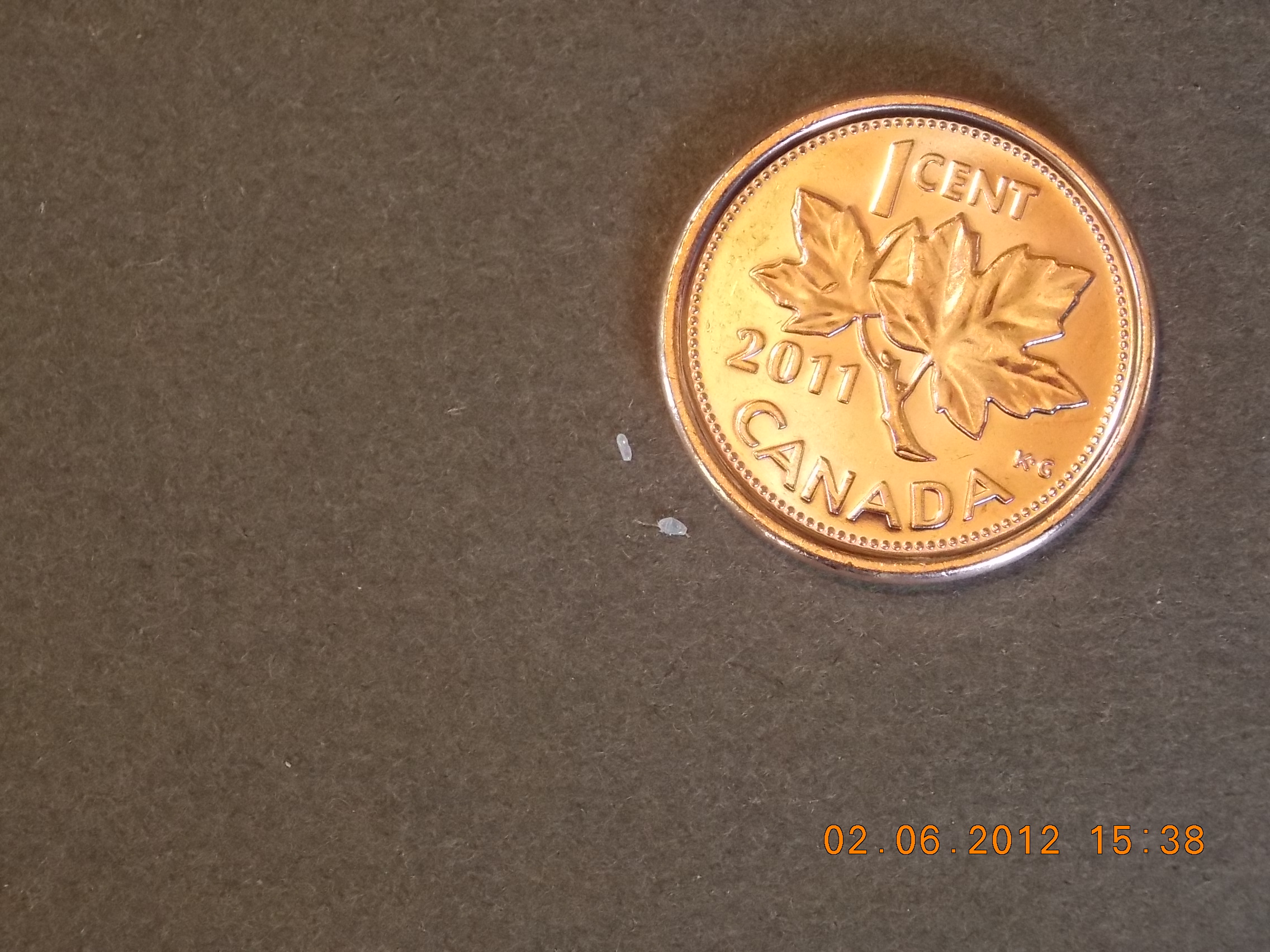
Bed Bug Eggs
Two bed bug eggs alongside a Canadian penny for scale.

Bed Bug Life Cycle
Representation of the life cycle of bed bugs illustrating the changes in size, colour and appearance as they develop from egg to adult.
Courtesy of http://www.bedbugbeware.com
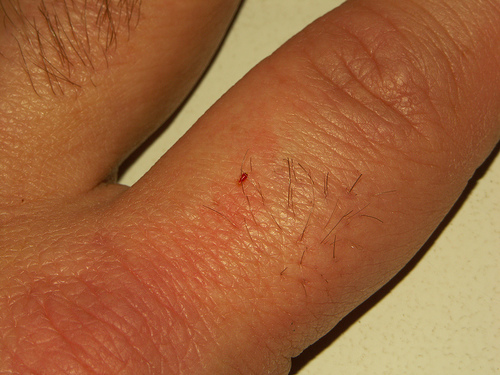
1st Instar Feeding
First instar bed bug on left forefinger while it is feeding.
Notes and photo courtesy of Lou Sorkin
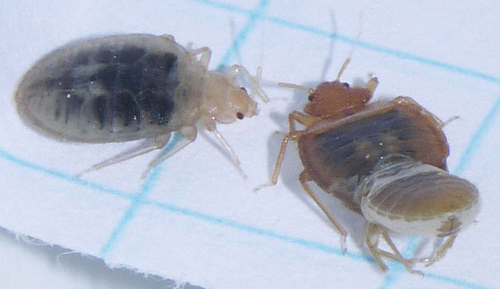
Bed bug cast skin beside bed bug
The bed bug on the right is in the process of shedding it's skin; it remains attached to its rear end. Bug on left recently molted. Notice it is paler, lighter coloration. Both bugs have blood from previous (5th instar nymph) stage still in their digestive tracts. Molting occurs when bug is physiologically ready. It doesn't have to totally digest its current blood meal first. Newly molted adult females may be able to produce eggs and mate before their first adult blood meal.
Scale: 1/4 inch squares. Photo courtesy of Lou Sorkin.
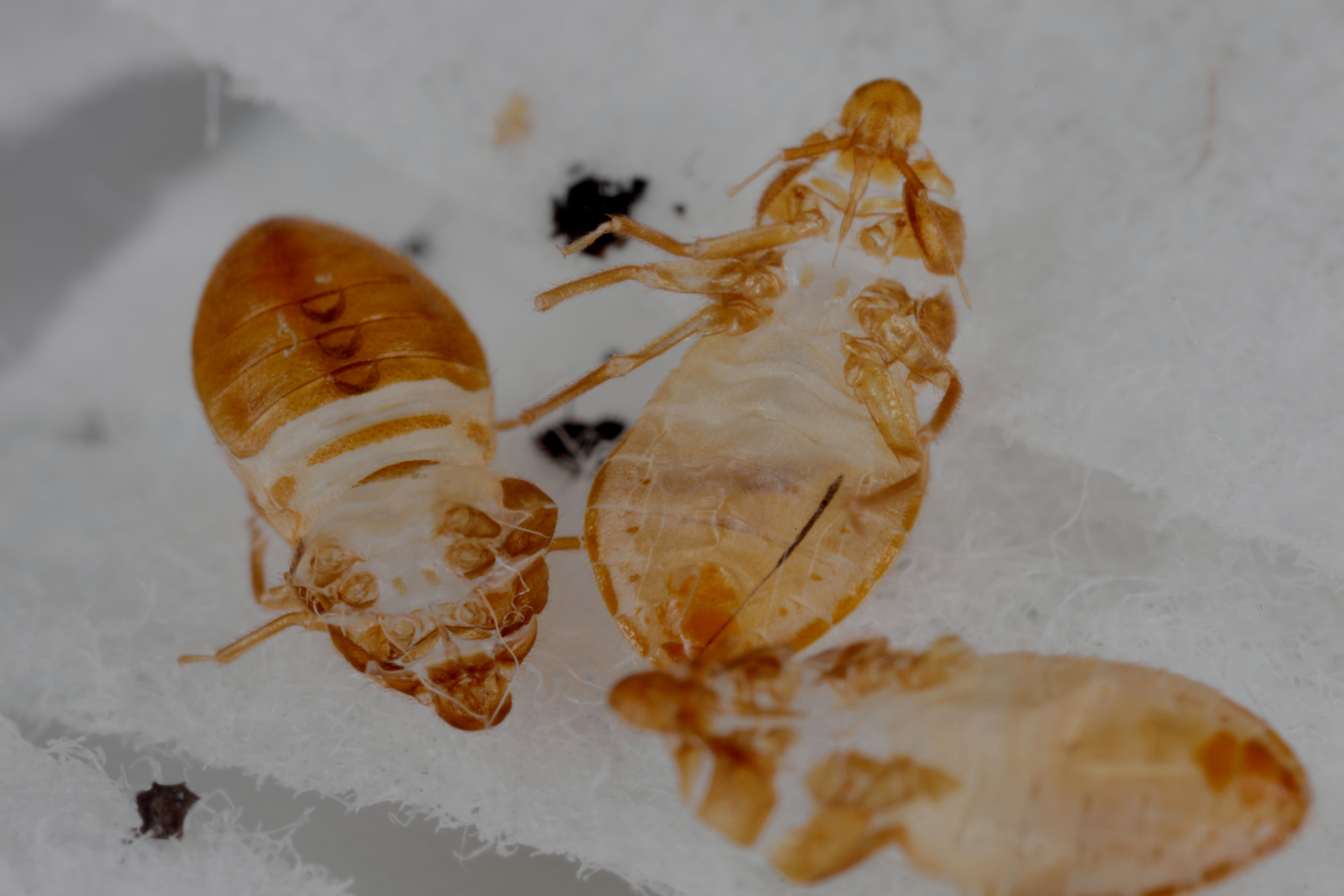
5th Instar Shed Skins
A dorsal, and 2 ventral views of the exuviae or shed skins of 5th instar bed bug nymphs. You can see the 3 dorsal scent gland areas on the middle of 3 dorsal abdominal sclerites in bug on left. You are looking into the bug: the thoracic sclerites split down the center and on head and the adult crawled out. The proboscis is evident as are 2 antennae of the bug on right. Contrast, brightness, gamma settings modified to enhance the sclerotized parts.
Note and photo courtesy of Lou Sorkin
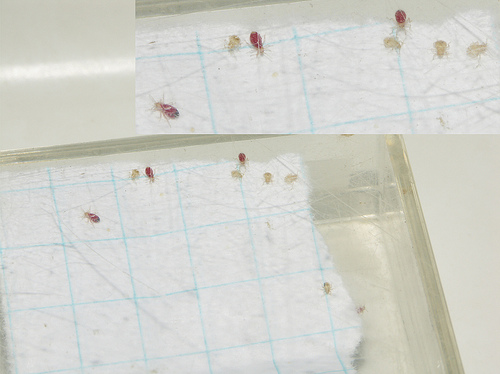
Fed and Unfed 1st Instar Nymphs
Recently hatched bed bug first instar nymphs. Some have just fed and others have not. 1/4 inch squares. The length of an unfed nymph is around the thickness of a credit card.
Notes and photo courtesy of Lou Sorkin
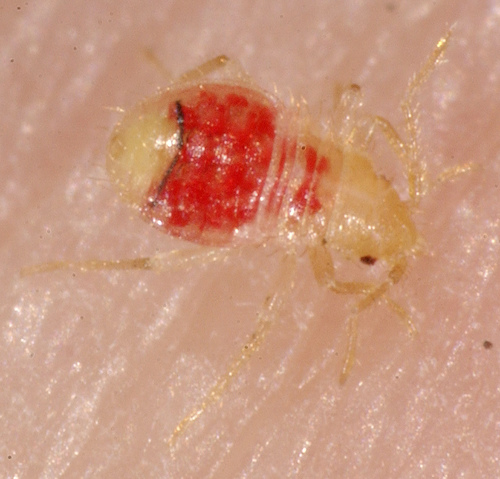
1st Instar Nymph Feeding
Bed bug first instar nymph a few minutes into feeding.
Notes and photo courtesy of Sorkin & Mercurio
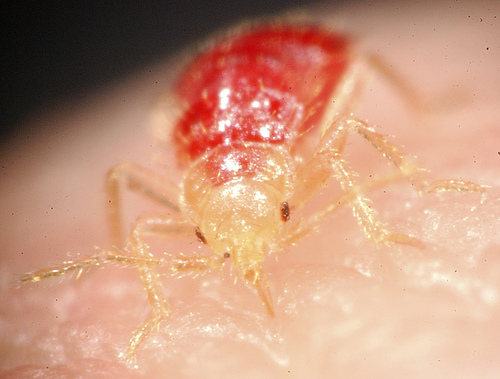
1st Instar Head Shot
Bed bug first instar front view of head and mouthparts while it is feeding.
Notes and photo courtesy of Sorkin & Mercurio
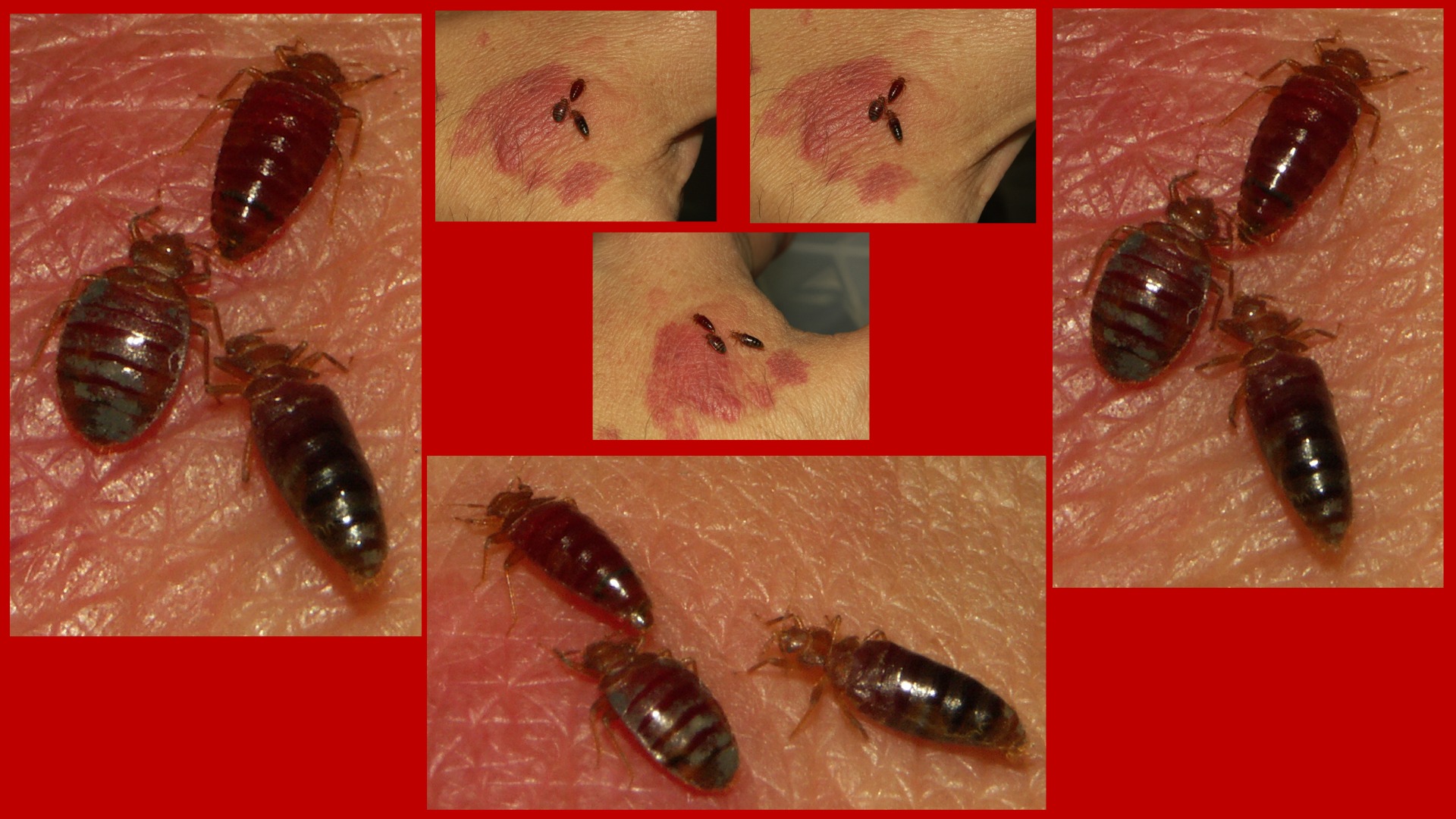
Views of 3 bed bugs as they feed. There are 2 females and one male. One female is easy to identify since it hasn't quite filled up, but the other 2 have become distended with blood and most people would call both males because they are elongate and not a typical roundish shape thought to be characteristic of a female bed bug body. Hint: the female terminalia is symmetrical, while that of the male is not. It is also easy to see the articulated wings on the thorax of one bug.
Photo courtesy of Lou Sorkin

Bed Bug Or Louse?
P=Pediculus (louse)
C=Cimex (bed bug)
Notice that the smallest louse is smaller than a first instar bed bug nymph.
Also a louse in the group on the left middle area of picture is defecating, a behavior that contributes to it being an important insect vector for louse borne diseases. Defecation on the host and the host scratching introduces the disease organism into the excoriated skin.
Notes and photo courtesy of Lou Sorkin
















